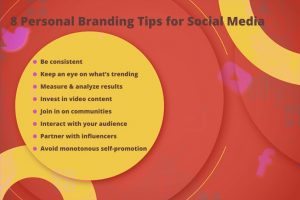 If you’re a marketer charged with maintaining your business’s blog, you’re likely doing your best to write, curate and post the best content you can as often as possible. But let’s face it, business blogging can be tough. It takes time and resources that are hard to find. And when your efforts don’t achieve the results you hoped for, it can be quite discouraging.
If you’re a marketer charged with maintaining your business’s blog, you’re likely doing your best to write, curate and post the best content you can as often as possible. But let’s face it, business blogging can be tough. It takes time and resources that are hard to find. And when your efforts don’t achieve the results you hoped for, it can be quite discouraging.
That’s why I’ve pulled together some fresh, new business blogging best practices to help take you to the next level. Take a look at the tactics, tips and methods below to start getting more out of your business blogging strategy.
Strive For Compounding Posts
According to HubSpot, every business has a certain type of post, which they refer to as “compounding posts” that make up just 10% of a blog’s repertoire, but generate 38% of the blog’s total. That means just one of these special posts generates the same traffic as six regular posts.
What is a compounding post? While typical posts generate an initial bump in traffic and then, as time goes by, they decrease in their effectiveness; they decay. Compounding posts, on the other hand, continue to deliver value and generate more and more traffic organically over time without any marketing efforts.
Compounding posts may not be the most popular posts at first, but they are evergreen, meaning they hold their relevance and value for very long periods of time. They are highly shelf-stable.
HubSpot shared a real example of one of its compounding posts, which you can see below. The graph shows that although the traffic generated by the post jumps and drops over time, it consistently achieves more traffic than it did in its first month after being published.
Source: HubSpot
These posts are, of course, incredibly valuable. Other than the initial work you and your team put into creating them, they require no effort or energy, yet continue to drive traffic to your site.
So how do you create compounding posts? HubSpot’s research report about compounding posts suggests the following tactics.
Answer common customer questions.
It’s likely that there are many people searching for the same questions you and your sales reps hear regularly from customers. Provide authoritative answers to their questions with your blog posts.
Write about a broad topic, but offer specific, actionable advice.
These types of posts might include product reviews, step-by-step process breakdowns, or instructions on how to diagnose an issue.
As HubSpot’s Mimi An writes, “If you’re trying to create a compounding post, write for as large as possible a segment of your potential customers. That means the post needs to cover a topic that has mass appeal.”
Consider SEO, even in your headlines.
Headlines that help posts become successful compounding posts help the reader quickly see what value they will gain by reading them. They often use words like “How,” “What,” “Why,” and “Best” to clearly show the reader that this post provides the answers they’re searching for.
Structure your posts to be easy and quick to read.
To become a compounding post, the content must be well-organized so that the reader can quickly consume the information. Use fresh and interesting images, bold your headlines, link to other relevant information, and put bulleted lists to good use.
Never Run Out of Great Ideas
It’s a shared fear of every content creator: writer’s block. Many content marketers worry about running out of ideas to write about. Never fear the blank page again. Here are some surefire ways to ensure that you are never short on ideas for blog posts.
First, start with just one topic. I’ll use the topic of business blogging as an example. Once you have a topic, try the following exercises:
Drill Down
Get as in-depth as possible with your topic. Take notes as you exhaust every possible option about that topic. Jot down questions, tips, insights, examples, statistics, and anything else that could be relevant to that topic.
At this point, you likely have enough information for several blog posts. Ask yourself where you can drill down deep to deliver exceptionally thorough and relevant content. Focus on creating the deepest, most detailed posts possible on your topic.
When completing this exercise for the topic of business blogging, I came up with the following ideas:
- How to measure the ROI of your business blog
- How to generate more leads with your business blog
- How to overcome the most common business blogging challenges
These topics are fairly specific and would allow me to provide great details in the content. I could provide actionable advice at a granular level. That’s the goal of this exercise – to provide a lot of ideas that take your topic deeper.
Zoom Out
Take a step back from your topic. Think of it on an industry-wide level. Look for ways to put your topic into a grander perspective. See if there are statistics you can use to demonstrate your topic’s relevance on a larger scale.
With my business blogging topic as an example, I came up with the following ideas:
- Best Business Blogs Around the World
- The Rapid Growth of Business Blogging
- Businesses That Are Killing it Their Blogs
You can see that these post ideas are broader in nature, but still valuable and relevant to individuals interested in business blogging. What’s interesting about these “drill down” and “zoom out” exercises is that they produce blog posts that appeal to people in very different parts of the buying process.
The posts resulting from the “zoom out” exercise are most likely to appeal to individuals in the awareness stage. They are early in the buying process and their prerogative is simple. They want to better understand their situation and clearly identify their challenges. These higher-level blog posts will help them build that understanding and become more familiar with, in the case of my example, the generalities of business blogging.
In contrast, the “drill down” exercise produces post ideas that are likely to appeal to people in the consideration stage. These individuals are a little further into the buying process and they’re searching for content that helps them begin to understand their options for overcoming the challenges they defined in the awareness stage. These posts provide actionable information that these readers will value as they work through the buying process toward making purchasing decisions.
Change Formats
Sometimes it is easy to get into the habit of consistently writing one or two types of blog posts. Try thinking of different ways to present your topic. Here are some options to consider:
- How-to: Provide detailed steps the reader can implement.
- List: Present your content in an easy-to-consume list format, broken into simple chunks.
- Review: Offer your opinion on related products, services, studies, news and events.
- Case Study: Put your topic in the format of a use case and present best practices and real-life examples.
- Data-Driven: Center your post around hard facts. Present the data from a recent study along with graphs and visual representations of some of the more impressive stats.
- SlideShare: Instead of a traditional blog post, put your content into slides and publish it on SlideShare. Embed the SlideShare into your post along with a summary.
- Infographic: A picture is worth a thousand words, right? Get creative and get visual with your content. Use interesting data and statistics to present your information in an infographic that will work well not only for your blog, but also for social media, especially Pinterest.
- Video: Consider changing things up and instead of writing, recording. Create a solid outline with your key talking points and record a video, optimize the video for SEO and post it to your blog and social media for great impact.
Use Variations
Look at your topic from several different perspectives with the help of variations. Instead of trying to come up with a lot of new, unique topic ideas, this helps you develop a list of different takes on a single idea – each unique enough to capture your audience’s attention and retain their engagement.
For example, using my topic “business blogging,” I might come up with the idea to write about “How to Generate Leads With Your Business Blog.” Here are some variations of that single topic:
- How to Convert Leads to Customers With Your Business Blog
- How to Nurture Leads With Your Business Blog
- How to Increase Brand Loyalty With Your Business Blog
- How to Generate Leads With Your B2B Business Blog
- How to Generate Leads With Your B2C Business Blog
See how it works? By just changing one piece of your topic, you’ve got a whole new idea for a great blog post.
By examining topics from different perspectives, your posting pipeline will not only be constantly flowing, but your blog will also remain fresh and relevant to your readers.
Many marketers often feel like they are constantly writing about the same things over and over again. When you inject those repetitive topics with different angles, deeper details, new voices, and varying formats, and unique angles, they become interesting, fresh and relevant to both your existing readers and new ones.
Align With Sales
There are so many important reasons to align sales and marketing; your business blog is one of them, as is all of your marketing content, for that matter. Who better to talk to about what your current and prospective customers want to know than your sales team? They speak to leads, prospects and customers daily. They know their common questions and concerns. They’re used to addressing their challenges and overcoming their objectives.
Directly Address Objections and Concerns
Ask your sales reps what objections and concerns they face most frequently among prospective customers. Write blog posts that directly address those challenges. Let’s use business blogging again as an example and assume that our sales team is selling a business blogging platform.
Challenge: I can’t afford it.
Blog Topics:
- Why you can’t afford NOT to be blogging for your business
- How to measure the ROI of your business blog
- How to gain your boss’s buy-in for business blogging
Answer FAQs
Again, ask your sales reps for the questions the are constantly fielding from customers and prospects. And if you can’t get that information, try visiting your company’s own FAQs page for some inspiration. Write a blog post that directly responds to each question.
These posts are great because they are likely to provide answers not only to frequently asked questions, but also frequently searched-for questions, meaning that if you structure them well and use keywords strategically, they should do well from an SEO perspective.
Here are some examples using business blogging once more:
Question: How often should I blog?
Blog Topic: Business Blogging Frequency: How often you should post
Question: What should I blog about?
Blog Topic: The Best Topics for Your Business Blog
Leverage Old Posts
Don’t underestimate the power of posts from the past. HubSpot actually found that 76% of its website traffic and a staggering 92% of leads generated by its blogs were coming from posts published at least a month earlier. In other words, HubSpot’s “old posts” were generating the vast majority of the blog’s traffic and the leads it generated.
Chances are that your blog’s “old posts” are also driving more traffic and leads than you might realize. A process HubSpot calls historical conversion optimization can help you leverage your highest-performing old blog posts and past posts with the greatest potential to drive the greatest results for your business.
Learn how to conduct historical conversion optimization for your business blog in our recent post entitled “INBOUND Insights: Use Old Blog Posts to Generate New Leads”, which will walk you through the process step-by-step.
Align With Marketing
It may seem like common sense to align your business blog with your marketing strategy. However, more often than not, the two run separately alongside each other instead of being integrated and truly working together.
Be sure to include a relevant CTA in each of your blog posts. The best conversion rates are achieved by blog posts with CTAs that are closely related to the topic. For example, in my blog post entitled “How to Maximize the ROI of your Business Blog,” I could include a CTA encouraging readers to download a research report about business blogging. But a better CTA for this post would be for a Business Blogging ROI Calculator.
When you create your business blog’s content calendar, be sure to incorporate topics that align with the content you’re creating, the campaigns you’re compiling and the messaging, offers and promotions you’ll be rolling out at the same time each blog post is published.
For example, if I have a webinar coming up in a few weeks entitled, “How to Win at Business Blogging.” I should probably plan to have a few blog posts related to business blogging strategically published leading up to the webinar.
Business blogging can be challenging, but when armed with solid strategies, tools and tactics, you can achieve results that make it well-worth the effort. Put these tips to use today and start building a better business blog. I would love to hear about your results!
Digital & Social Articles on Business 2 Community(115)







